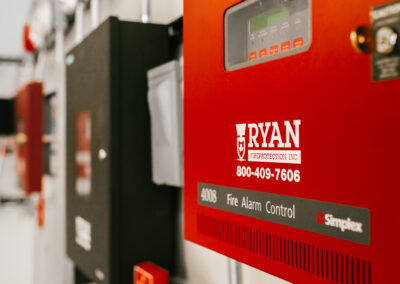Fire sprinkler systems are incredibly effective when they’re working properly. Inspection, testing, and maintenance are essential to making sure everything is functioning properly and is up to code. But how often should you have each component inspected and tested?
According to the NFPA, here is the inspection schedule for fire sprinkler systems:
- Gauges (dry, pre-action, and deluge systems): Inspect Weekly
- Gauges (wet pipe systems): Inspect Monthly
- Waterflow alarm devices, supervisory signal devices, hydraulic nameplates, valves supervisory alarm devices, and control valves: All valves shall be inspected weekly; Valves secured with locks or supervised in accordance with the applicable NFPA Standards shall be permitted to be inspected monthly.
- Pipes and fittings, hangar/seismic bracing, spare sprinklers, and information signage: Inspect Annually
- Internal inspection of sprinkler piping: Inspect Every 5 Years
While inspection is hugely important, there are also guidelines for how often each fire sprinkler component should be tested. According to NFPA 25, physical testing of fire sprinkler components must be done on this schedule:
- Sprinkler mechanical devices: Test Quarterly
- Vane and pressure switch devices: Test Semiannually
- Complete fire sprinkler system test, including low flow tests, alarm tests, trip tests, deluge, preaction valves, antifreeze concentration tests, and fire pump tests: Test Annually
- Sprinklers exposed to extra-high temps and harsh environments: Test or Replace Every 5 Years
- Gauges: Calibrate or Replace Every 5 Years
- Dry sprinklers: Test or Replace Every 10 Years
- Fast-response sprinklers: Test or Replace Every 20 Years Initially, Then Every 10 Years
- Standard response sprinklers: Test or Replace Every 50 Years Initially, Then Every 10 Years
How often do you need to have your fire sprinkler system serviced?
Assuming you keep up with regular inspection and testing, maintenance should be quite simple. It is also important to note that your insurance provider (such as FM) may even require items to be inspected and tested at a more frequent basis. Fixing small issues discovered during inspections and tests will keep maintenance to a minimum. If those tests and inspections turn up any signs of rust, wear, or corrosion, then those affected components should be replaced.

